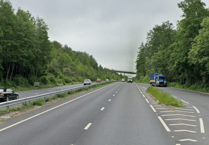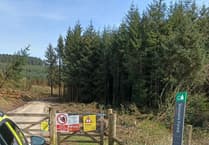SPEEDING vehicles on Dartmoor have the greatest impact on the visitor experience, a survey has revealed.
In Dartmoor National Park Authority’s first visitor survey since 2017, carried out between July and October, vehicles going above the 40mph speed limit are the most annoying for visitors, poorly parked vehicles are second and litter third.
Too many visitors are the fourth most irritating.
The national park received just over 400 responses at 16 locations including Haytor, Postbridge and Princetown Visitor Centres, Burrator Reservoir and Bellever Forest.
It wants to use the figures to develop a greater awareness of visitors’ attitudes and visitor profiles.
It plans to repeat the survey every two or three years.
The proportion of day visitors (60 per cent) and staying visitors (32 per cent) has remained similar since 2017, but the number staying more than a week has declined.
Most people stayed in self-catering accommodation or with friends and 65 per cent came from Devon.
Most people used their car to get to and around the moor and with less than one per cent travelling by bus.
Active travel was much more common within the national park with 27 per cent of respondents reporting they walked.
Fifty-six per cent of respondents said they would find an app or guide which collated Dartmoor places of interest useful.
Eighty-nine per cent said Dartmoor was well-conserved, but roughly half thought there were other features which should be conserved or enhanced.
More electric vehicle charging points, solar equipment, banning barbecues, lowering speed limits, protecting peat bogs and banning plastics were among suggestions to address the climate emergency.
Members of DNPA suggested next time surveys should be conducted at Okehampton and Ivybridge stations, as many people used trains to access the moor.
All roads through the park are 40mph limit to protect cattle, sheep and ponies who freely roam around and can easily stray onto the roads.
DNPA will investigate trends to see who visits the moor when and for what purpose and how an app mainly for walking routes can be expanded.




